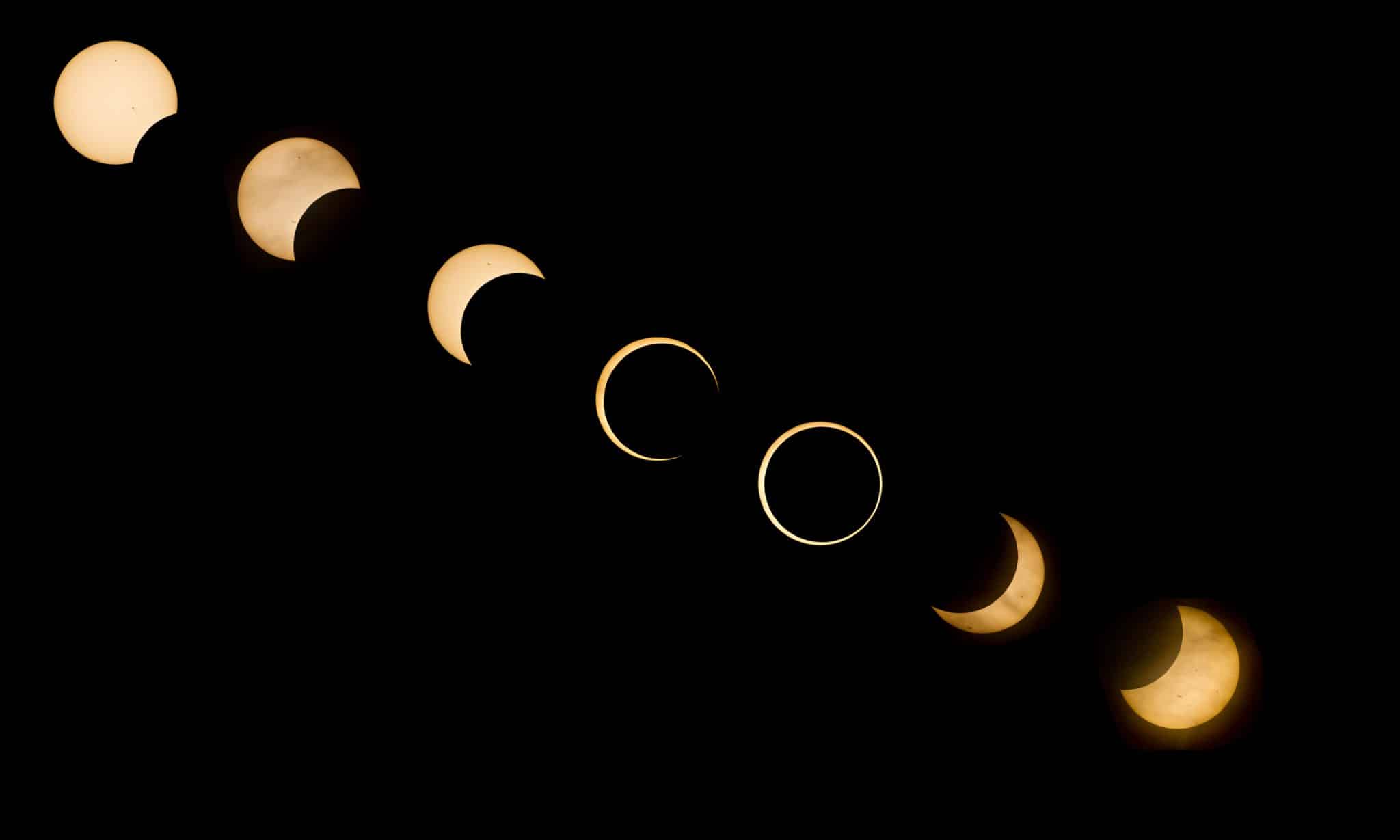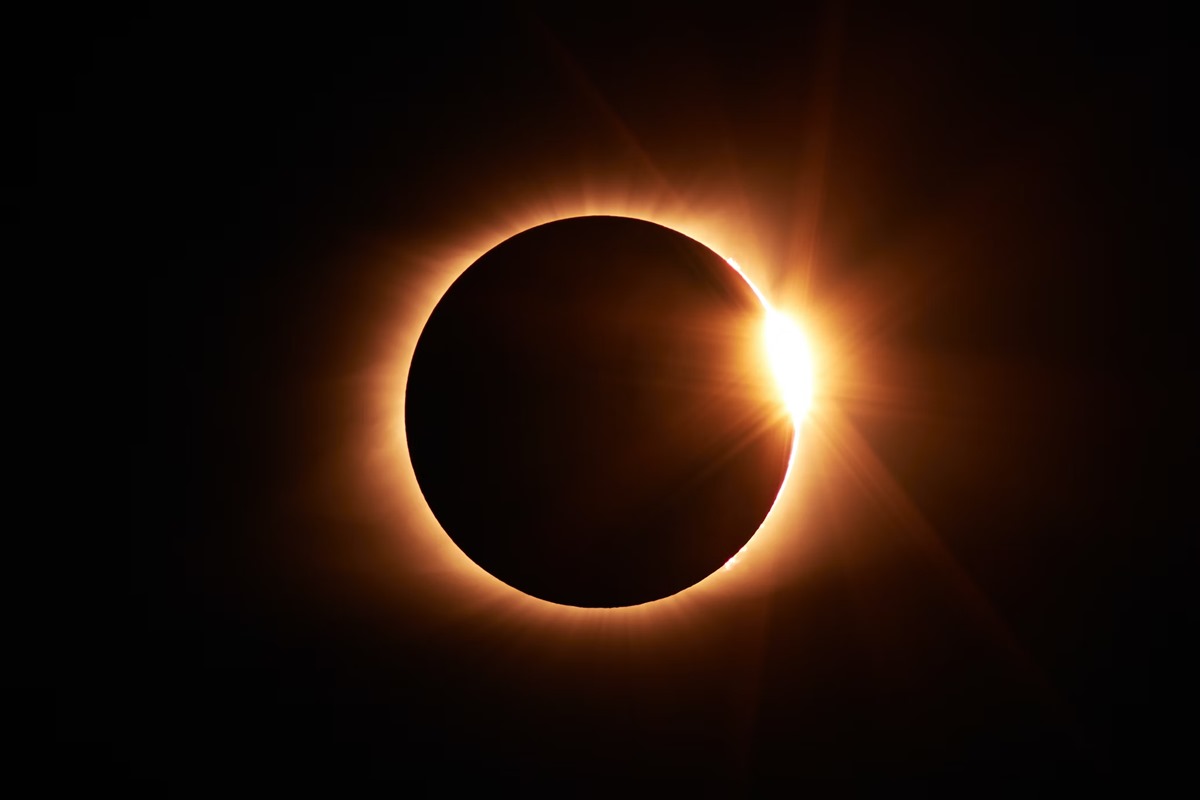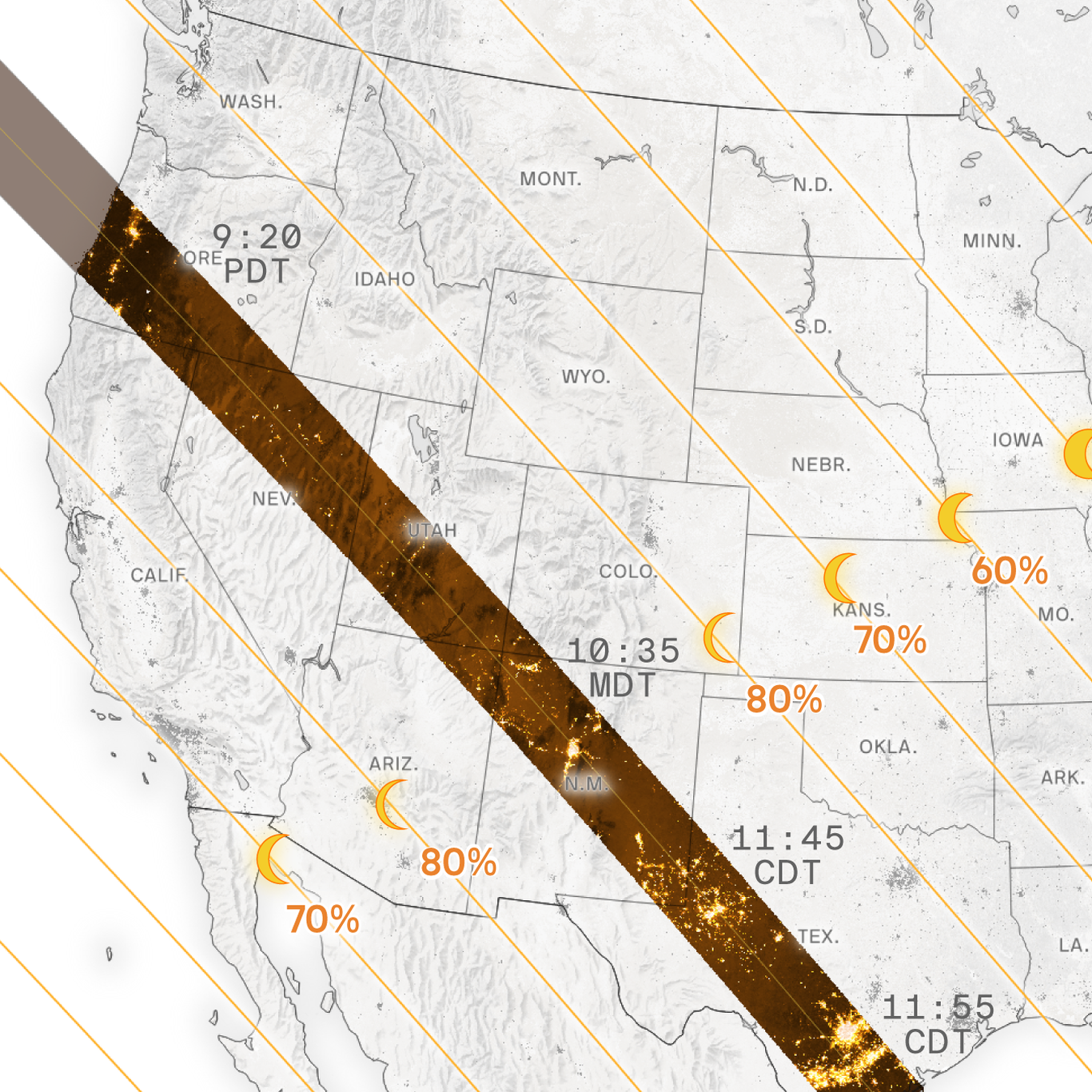Science
‘Ring Of Fire’ Eclipse Brings Cheers And Shouts Of Joy As It Moves Across The Americas

CANCUN, MéXICO — A Solar Eclipse! After crescent-shaped shadows formed on the ground and darkening skies, spectators congregated along the narrow path of a rare “ring of fire” solar eclipse on Saturday erupted in applause.
The spectacle captivated millions of individuals throughout the Americas as the moon entered its designated position and obscured the sun’s outermost region, leaving only a dazzling circle visible.
To observe the eclipse, hundreds of individuals flocked to the planetarium in the Caribbean resort city of Cancún. While some individuals utilized box projectors, others employed telescopes and specialized spectacles to observe.
Children who were filled with anticipation whistled, while some adults extended their arms in an apparent salutation towards the sky in anticipation of the eclipse.
Outside plant vendors witnessed the lunar-sun cycle more organically, aided by trees through which the varying sunlight penetrated, thereby generating distinctive silhouettes on the pathway.
“There was silence and a misty appearance, as if it were dusk, but the birds resumed singing within minutes,” one of the vendors, Carmen Jardines, 56, remarked.
Artemia Carreto was relating her recollections of her childhood in southern Mexico to onlookers when they were directed their attention to the river, which was exquisitely reflected in the dunes beneath.
Although Carreto was not near a river then, she reported being captivated by the sensations brought about by temperature fluctuations and a weighty sensation she attributed to the Earth’s rotation.
Pilar Cáceres perceived an aura of vitality.
‘Ring Of Fire’ Eclipse Brings Cheers And Shouts Of Joy As It Moves Across The Americas.
“It is something that nature brings us and we must observe it,” said the retired elementary school teacher, age 77, who followed the eclipse’s shadow with a piece of cardboard.
Proficient ancient Maya astronomers, who meticulously monitored the celestial and lunar movements, denoted eclipses as “broken sun.” According to archaeologist Arturo Montero of Tepeyac University in Mexico City, the dark volcanic glass might have been used to protect the eyes.
In contrast to a total solar eclipse, a ring of fire eclipse does not witness the complete obscuration of the sun by the moon. A brilliant, fiery border is produced when the moon aligns between the Earth and the sun.
From the instant the moon begins to obscure the sun until it returns to its normal position, the eclipse lasts between two and a half hours at any given location. Three to five minutes comprised the ring of fire segment, which varied by location.
The U.S. itinerary for Saturday includes New Mexico, Oregon, Nevada, Utah, and Texas, with a narrow glimpse of California, Arizona, and Colorado. Yucatán Peninsula, Mexico, Belize, Honduras, Nicaragua, Costa Rica, Panama, Colombia, and Brazil followed. The majority of the Western Hemisphere experienced a partial eclipse.
Other organizations, including NASA, live-streamed the event.
Some eclipse watchers in the United States ventured to remote regions in an attempt to obtain the best possible view, whereas those in Albuquerque were treated to a double treat: the eclipse occurred during an international balloon fiesta, which annually attracts hundreds of hot air balloon pilots and tens of thousands of spectators.
‘Ring Of Fire’ Eclipse Brings Cheers And Shouts Of Joy As It Moves Across The Americas.
The balloon launch field emanated hoots, hollers and yelps as the moon approached its oblique position over the sun. As the spectacle unfurled, some pilots utilized their propane burners to send flames upward in unison.
Aurora, Colorado-based balloon pilot Allan Hahn remarked, “It’s very exciting to be here and experience the convergence of our passions for aviation and something so natural as an eclipse.”
Before dawn, ardent individuals descend upon the footpaths of Bryce Canyon National Park in Utah, staking out their preferred locations amidst the red rock hoodoos.
As the ring of fire peaked, applause reverberated throughout the park’s canyons.
“I just think it’s one of those things that unites us all,” said John Edwards, a cancer drug developer who viewed the eclipse from Bryce Canyon after traveling alone across the country.
When Kirby James and Caroline McGuire, both from Toronto, planned their excursion to southern Utah, they were oblivious that they would be in an ideal location.
“Nothing you could read could prepare you for how it feels,” said co-founder of a software company, Kirby James, 63. “That precise instant, particularly when the ring of fire illuminated, you realized you were witnessing an experience once in a lifetime.”
‘Ring Of Fire’ Eclipse Brings Cheers And Shouts Of Joy As It Moves Across The Americas.
Along the path, small villages and cities experienced a mixture of anticipation and apprehension regarding the weather and the potential overabundance of visitors seeking to observe the annular solar eclipse.
As the eclipse was only intermittently visible in Eugene, Oregon, murmurs of disillusionment accompanied oohs and ahs; the sun’s light peered through the cloud cover only occasionally.
The Tatacoa desert in southern Colombia served as the location where astronomers assisted a group of visually impaired individuals in perceiving the moon and sun’s ideal golden ring by utilizing elevated maps and temperature fluctuations.
Minister of Science of Colombia Yesenia Olaya stated that such occasions ought to motivate individuals to foster an interest in science among children to the extent that they consider it “a life project.”
Juan Pablo Esguerra, age 13, eagerly anticipated accompanying his father on the lunar eclipse trek to the desert for several months.
‘Ring Of Fire’ Eclipse Brings Cheers And Shouts Of Joy As It Moves Across The Americas.
He stated, “I enjoy astronomy because it is a spectacular experience.” “This is the pinnacle of what I have ever witnessed.”
Amidst the assembly of thousands of individuals on the main esplanade of the National Autonomous University of Mexico, the principal public institution of the nation, some children arrived in Mexico City adorned as astronauts. As individuals contributed specialized eyewear, the university assembled telescopes.
The eclipse on Saturday was the first to occur in Brazil since 1994. Although the event was relayed online by the nation’s national observatory, thousands flocked to parks and beaches in the north and northeast to observe it.
A total solar eclipse will traverse the United States in the opposite direction in April of that year. Before arriving in Canada, this one will traverse from Texas to New England via Mexico.
The following ring of fire eclipse will occur at the southernmost point of South America in October of next year. By 2026, Antarctica will have one. Before another ring of fire is visible in the United States, it will not occur again until 2039, and Alaska will be the only state in its direct path.
SOURCE – (AP)





































